Note
If you are also curious about the previous winner of the contest, see Use Case - Vehicle to Smart Home Solution.
If you are also curious about the previous winner of the contest, see Use Case - Vehicle to Smart Home Solution.
December 29, 2022
The World Embedded Software Contest (Korean website), celebrating its 20th anniversary, is the only and biggest embedded SW contest in Korea. webOS has been joining as one of the contest categories since 2019.
The winner of this year’s The World Embedded Software Contest is the “Home++” project. (Team: Bang-Pa-Je) This project focuses on wall pads which are commonly found in many Korean houses. Using the wall pads and webOS OSE, the team shows a demo of several useful features which can be adopted for many homes.
Let’s see a demo video of the project (Korean only).
The following figure shows the overall system architecture.
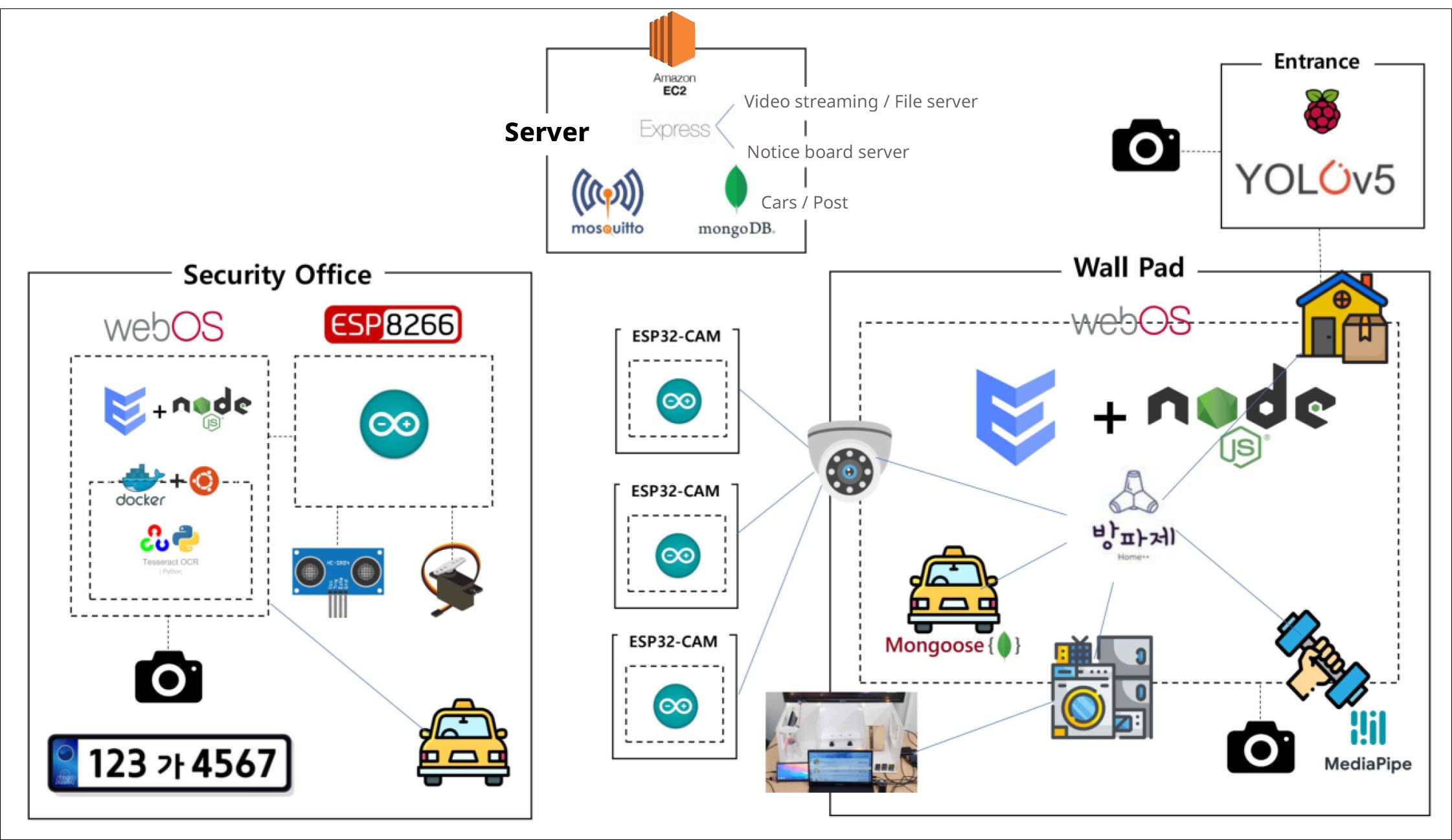
| Component | Description |
|---|---|
| Wall Pad | This component is the primary device of this project. Through the wall pad, users can control various features of this project. |
| Security Office | This component takes pictures of Vehicle Identification Numbers (VINs), and determines whether the vehicles is authorized or not. |
| Server | This server stores workout videos, notice board data, VINs, etc. |
| Entrance | This component detects vehicles and sends a signal to the security office. |
The key features of the project are as follows:
This feature monitors the status of delivered packages at the front door.
When a package is delivered, webOS detects it through the camera. If the item is recognized as a delivered package, webOS starts to record a video. Then, if the package is not detected for a certain amount of time, webOS asks users whether they got the package or not.

In a webOS app, users can check videos from security cameras (ESP32-CAM). This feature supports live streaming, so that users can check the videos in real-time.
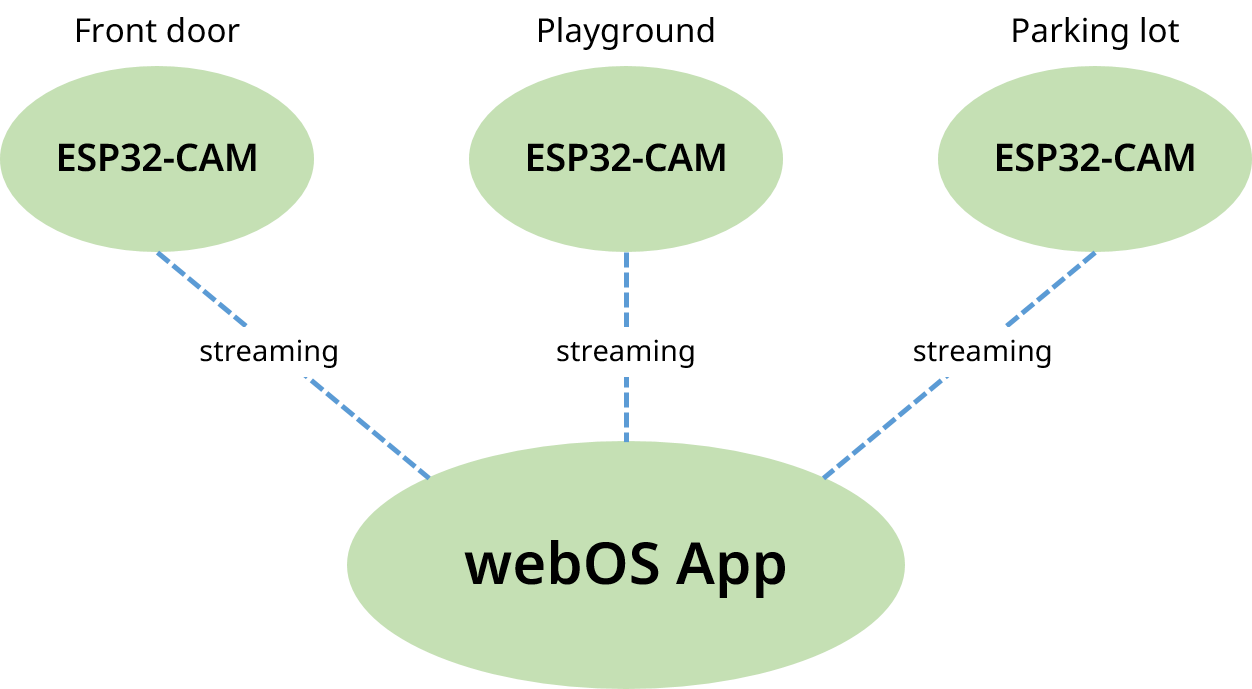
This feature analyzes the information about users’ workouts (posture, speed, reps, etc.) based on recorded videos.
Once users record a video of their workouts using the app, the app extracts workout statistics and uploads the video to the streaming server. After that, the app shows the graph and video of the workout.

This feature schedules the operation of home appliances.
Users can create a schedule on the notice board of the web server (implemented using Express). This schedule will be transferred to the webOS device through the MQTT protocol and generates a request. If the user accepts the request, the control device creates an operation schedule.
Users also can control home appliances using the webOS app or switches in the control panel.
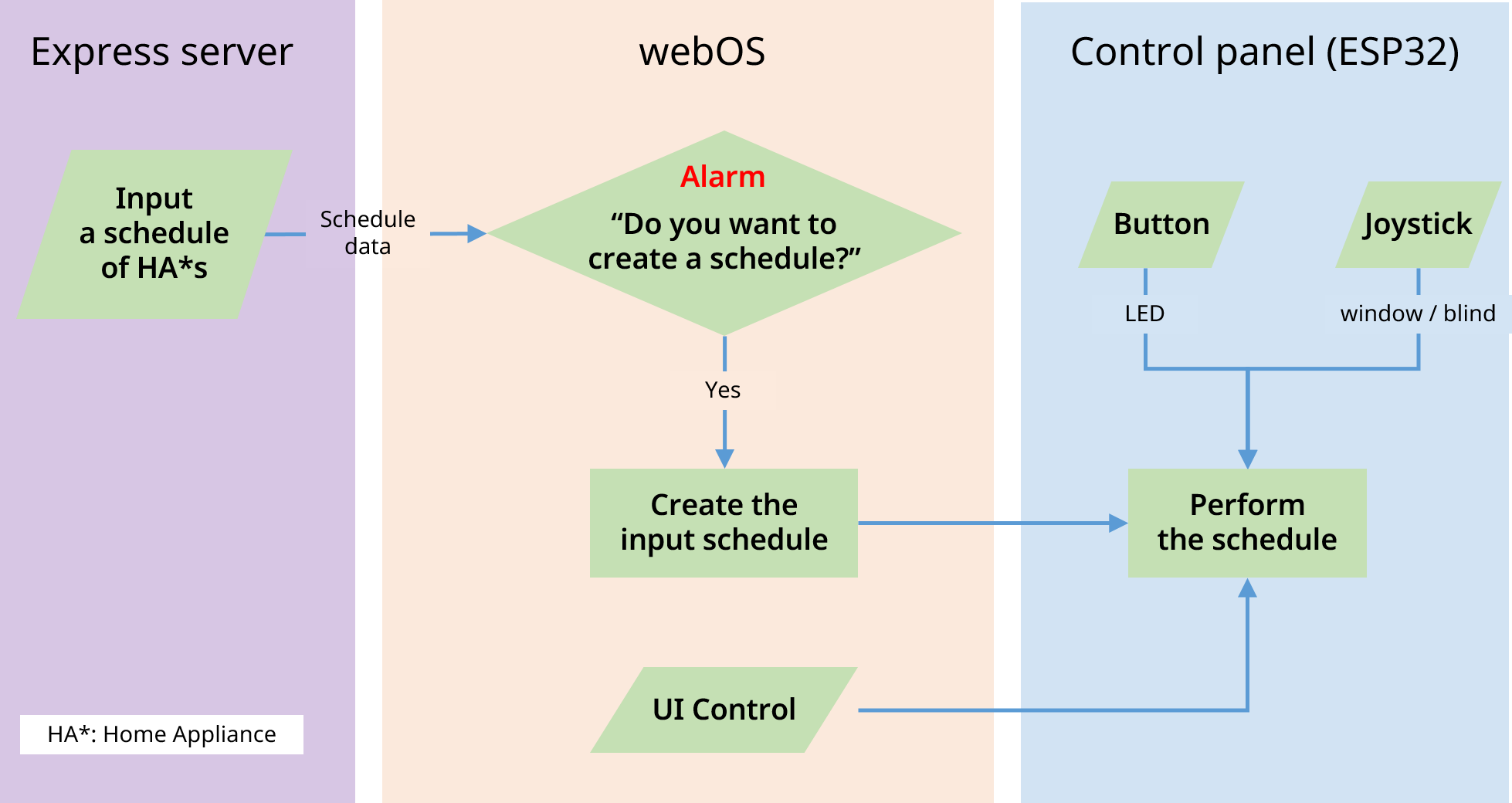
This feature manages the list of authorized vehicles permitted to enter the parking lot.
Users enter the vehicle’s VIN and parking period. This information will be saved in the database (MongoDB). When a vehicle arrives at the parking lot, the security office compares the VIN with the list in the database.
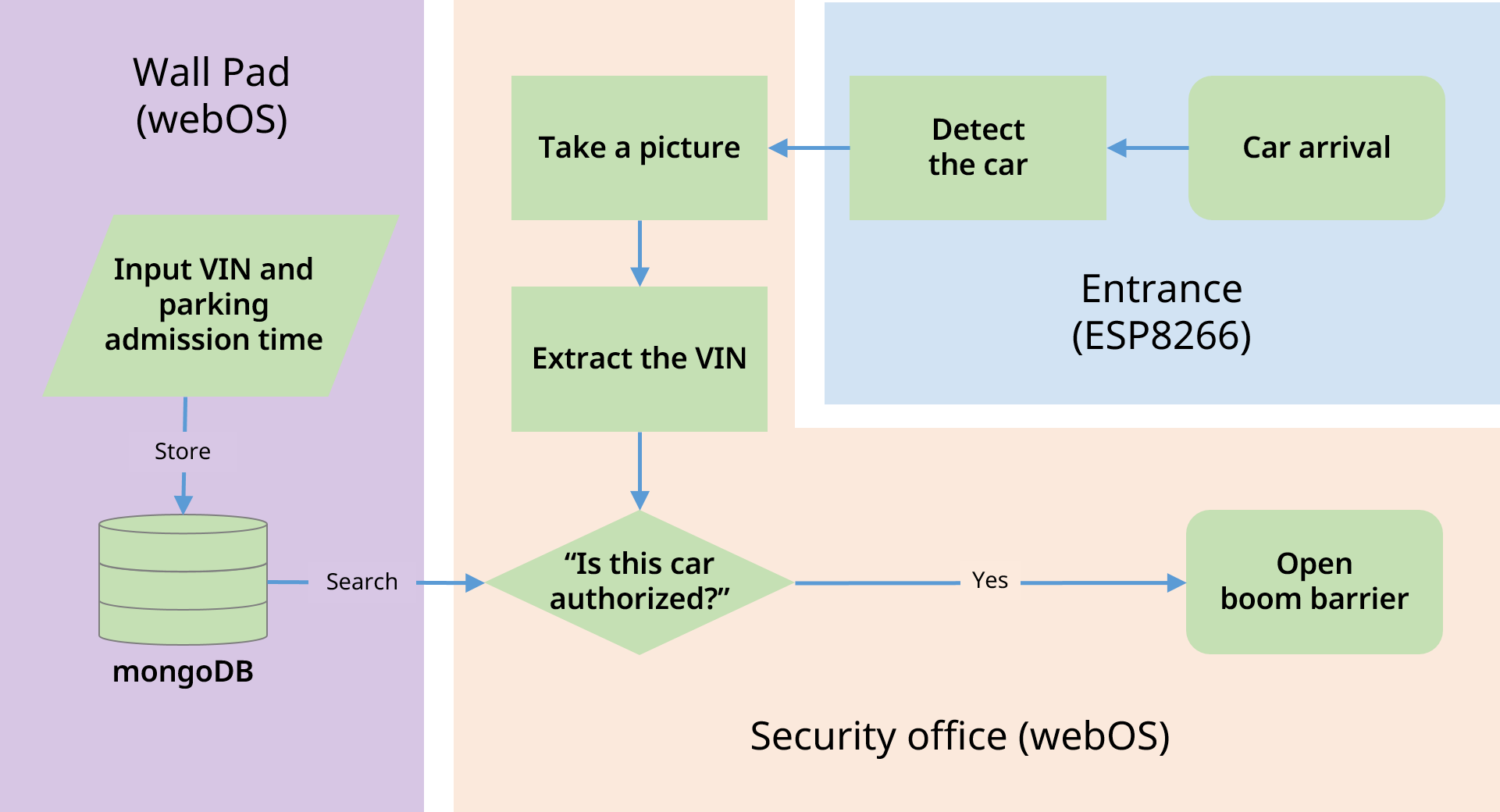
One of the biggest problems with the existing wall pads is that it is hard to add new features to the wall pad. Team Bang-Pa-Je suggested an app store as a solution for this problem. Developers can upload various apps to the app store so that users can download & install the apps they need.
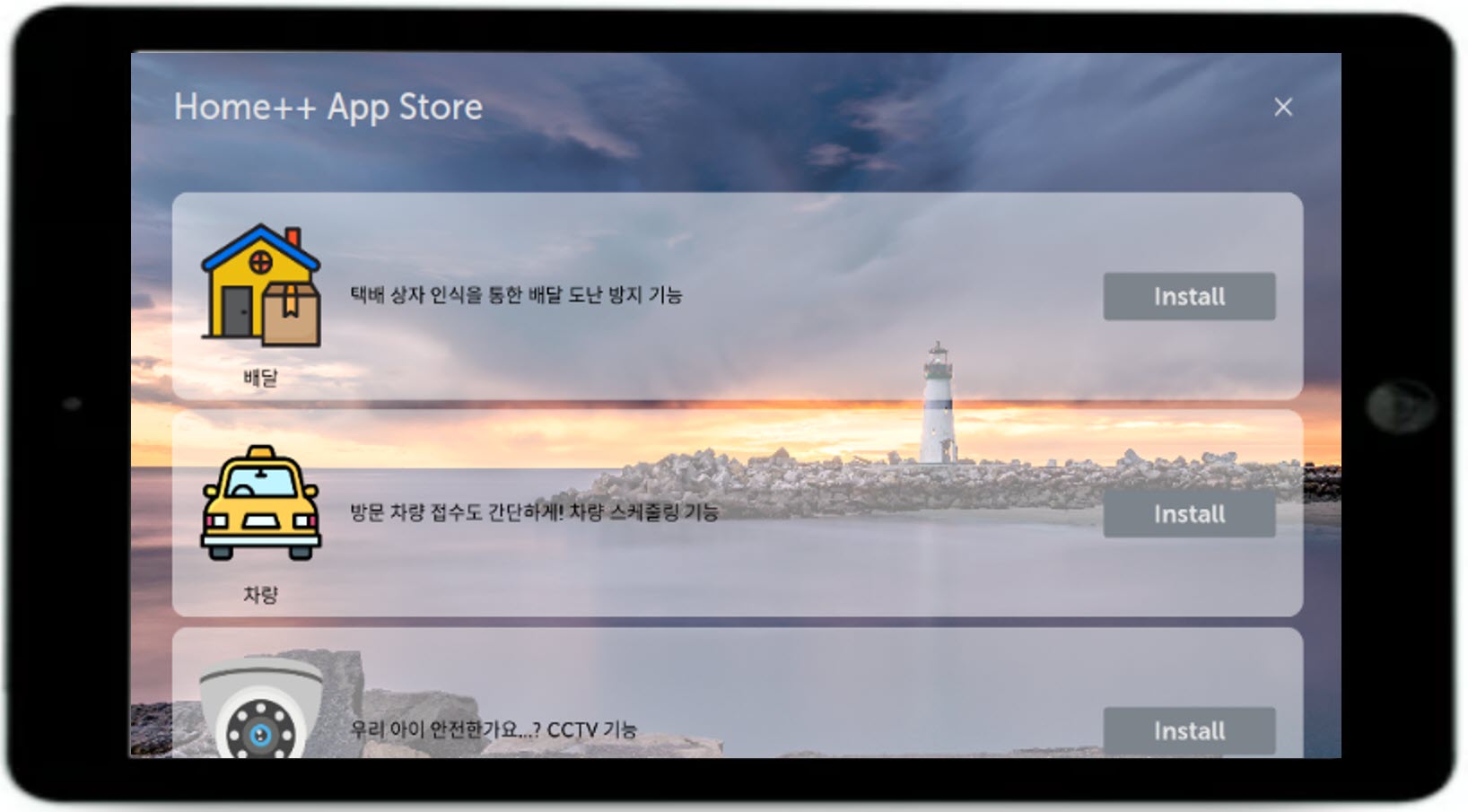
Members of the team Bang-Pa-Je summarize their experience developing with webOS OSE as follows:
In webOS, users can run web apps and services directly on the platform. we think it is one of the biggest strengths of webOS that should be taken care of. Also, many functionalities of LS2 APIs help us to implement many features using webOS.
But there are still some stability issues to be resolved, and the need for developer materials causes a steep learning curve of webOS.
Contents